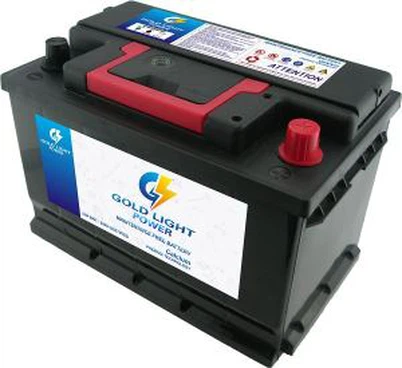What is the difference between a regular battery and an ups battery?
Leave a message
When it comes to power storage and backup solutions, batteries play a crucial role. Two common types of batteries that often come up in discussions are regular batteries and UPS (Uninterruptible Power Supply) batteries. As a UPS battery supplier, I've witnessed firsthand the confusion that customers sometimes have regarding the differences between these two types of batteries. In this blog post, I'll delve into the nuances of regular batteries and UPS batteries, highlighting their unique features, applications, and performance characteristics.
1. Basic Definitions and Functions
Let's start by understanding what regular batteries and UPS batteries are. Regular batteries, also known as primary or secondary batteries, are used in a wide range of everyday devices. Primary batteries are non - rechargeable and are designed for single - use applications, such as in remote controls, flashlights, and some toys. Secondary batteries, on the other hand, are rechargeable and can be used multiple times. Common examples include lithium - ion batteries in smartphones and nickel - metal hydride batteries in digital cameras.
UPS batteries, on the other hand, are a key component of an Uninterruptible Power Supply system. The main function of a UPS is to provide emergency power when the main power source fails. This is crucial for protecting sensitive electronic equipment, such as servers, data centers, and medical devices, from power outages, voltage sags, and surges. UPS batteries are designed to deliver a stable and reliable power supply for a certain period, allowing users to safely shut down their equipment or continue operating until the main power is restored.
2. Design and Construction
The design and construction of regular batteries and UPS batteries differ significantly. Regular batteries are typically designed to be compact and lightweight, making them suitable for portable devices. For example, the lithium - ion batteries used in smartphones are thin and can be easily integrated into the sleek design of the device. The internal structure of regular batteries is optimized for high energy density, which means they can store a large amount of energy in a small volume.
UPS batteries, in contrast, are built for durability and long - term performance. They are often larger and heavier than regular batteries because they need to store enough energy to power critical equipment during an outage. Most UPS batteries are lead - acid batteries, which come in two main types: valve - regulated lead - acid (VRLA) and flooded lead - acid. VRLA batteries are sealed and maintenance - free, making them a popular choice for many UPS applications. They are designed to withstand frequent charge and discharge cycles and can operate in a wide range of temperatures.
3. Performance Characteristics
Capacity and Discharge Rate
Regular batteries are designed to provide a relatively constant current over a long period. For example, a AA alkaline battery might have a capacity of around 2000 - 3000 mAh and can power a low - power device like a clock for several months. The discharge rate of regular batteries is usually slow and steady, as they are intended for continuous, low - level power consumption.
UPS batteries, however, need to be able to deliver a high current quickly. When a power outage occurs, the UPS battery must immediately supply power to the connected equipment. The capacity of UPS batteries is measured in ampere - hours (Ah) and can range from a few Ah for small, personal UPS units to hundreds of Ah for large, industrial - grade UPS systems. For instance, our 12v100ah UPS ECO Lead Acid Battery For Telecommunicate System Hospital Power Emergency Power Supply has a high capacity and can provide a significant amount of power for an extended period.
Lifespan
The lifespan of regular batteries varies depending on the type and usage. Primary batteries are designed for single - use and are discarded once they are depleted. Rechargeable regular batteries, such as lithium - ion batteries, typically have a lifespan of 2 - 3 years or 500 - 1000 charge - discharge cycles.
UPS batteries are designed to have a longer lifespan, especially when properly maintained. VRLA UPS batteries can last anywhere from 3 to 10 years, depending on factors such as the operating temperature, charge - discharge cycles, and the quality of the battery. Regular maintenance, such as checking the battery voltage and ensuring proper ventilation, can help extend the lifespan of UPS batteries.
Self - Discharge Rate
Regular batteries have a certain self - discharge rate, which means they lose their charge over time even when not in use. For example, nickel - metal hydride batteries can self - discharge at a rate of around 1 - 2% per day. This is an important consideration for devices that are not used frequently, as the battery may need to be recharged before use.


UPS batteries also have a self - discharge rate, but it is generally lower than that of some regular batteries. This is because UPS batteries are designed to be in a standby mode for long periods, waiting for a power outage to occur. A low self - discharge rate ensures that the battery is ready to provide power when needed.
4. Applications
Regular batteries are used in a vast array of consumer and industrial applications. They power everything from small household items like toothbrushes and wireless keyboards to larger industrial devices such as handheld meters and portable power tools. Their portability and versatility make them suitable for a wide range of uses where a small and lightweight power source is required.
UPS batteries, on the other hand, are specifically designed for critical applications where power reliability is essential. They are commonly used in data centers to prevent data loss and equipment damage during power outages. In hospitals, UPS batteries ensure that life - saving medical equipment, such as ventilators and monitors, can continue to operate during a power failure. Other applications include telecommunications systems, financial institutions, and manufacturing plants. For example, our 12V24AH EPS Battery For Fire Safety Power Protection Serious Computing Systems Hospital Power Emergency Power Supply and 12V38AH UPS Battery For Fire Safety Power Protection Serious Computing Systems Hospital Power Emergency Power Supply are ideal for these types of critical applications.
5. Cost Considerations
Regular batteries are generally more affordable on a per - unit basis. Primary batteries are inexpensive and widely available, making them a cost - effective choice for low - power, short - term applications. Rechargeable regular batteries may have a higher upfront cost, but they can save money in the long run as they can be reused multiple times.
UPS batteries, however, are more expensive due to their larger size, higher capacity, and specialized design. The cost of a UPS battery also includes the cost of the UPS system itself, which can be a significant investment. However, when considering the value of protecting critical equipment and preventing data loss, the cost of a UPS battery is often justified.
Conclusion
In conclusion, regular batteries and UPS batteries serve different purposes and have distinct characteristics. Regular batteries are designed for everyday, portable applications, offering high energy density and convenience. UPS batteries, on the other hand, are built for reliability and durability, providing emergency power for critical equipment during power outages.
If you are in need of high - quality UPS batteries for your critical applications, we are here to help. As a UPS battery supplier, we offer a wide range of UPS batteries to meet your specific needs. Whether you are looking for a small UPS battery for a home office or a large - scale battery for an industrial data center, we have the expertise and products to provide you with the best solution. Contact us today to discuss your requirements and start a procurement negotiation.
References
- Linden, D., & Reddy, T. B. (2002). Handbook of Batteries. McGraw - Hill.
- Kueck, J. D., & Sastry, A. M. (2011). Energy Storage for Power Systems. Wiley.





